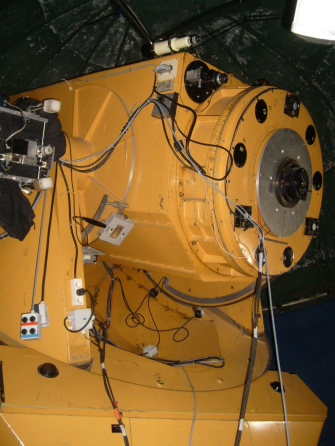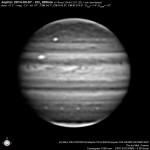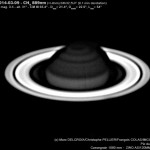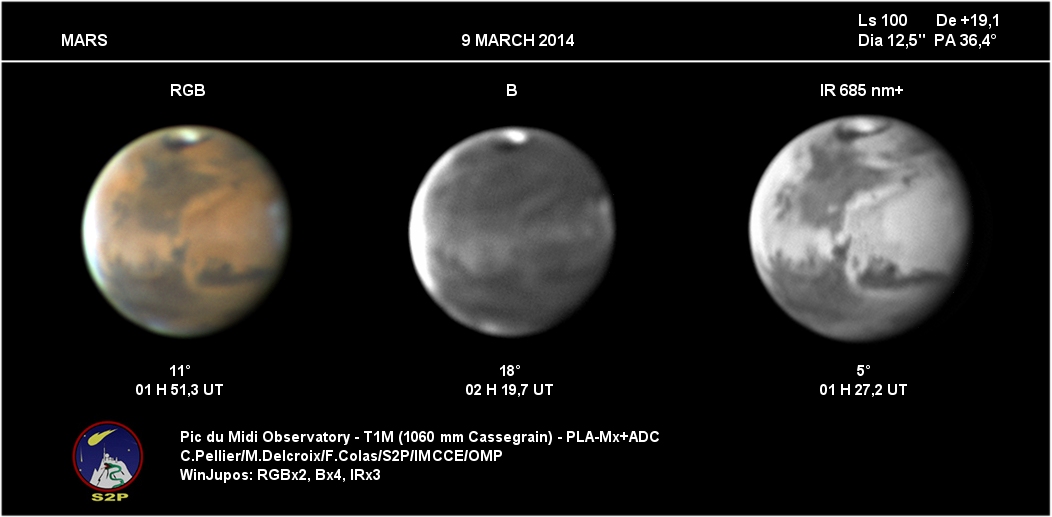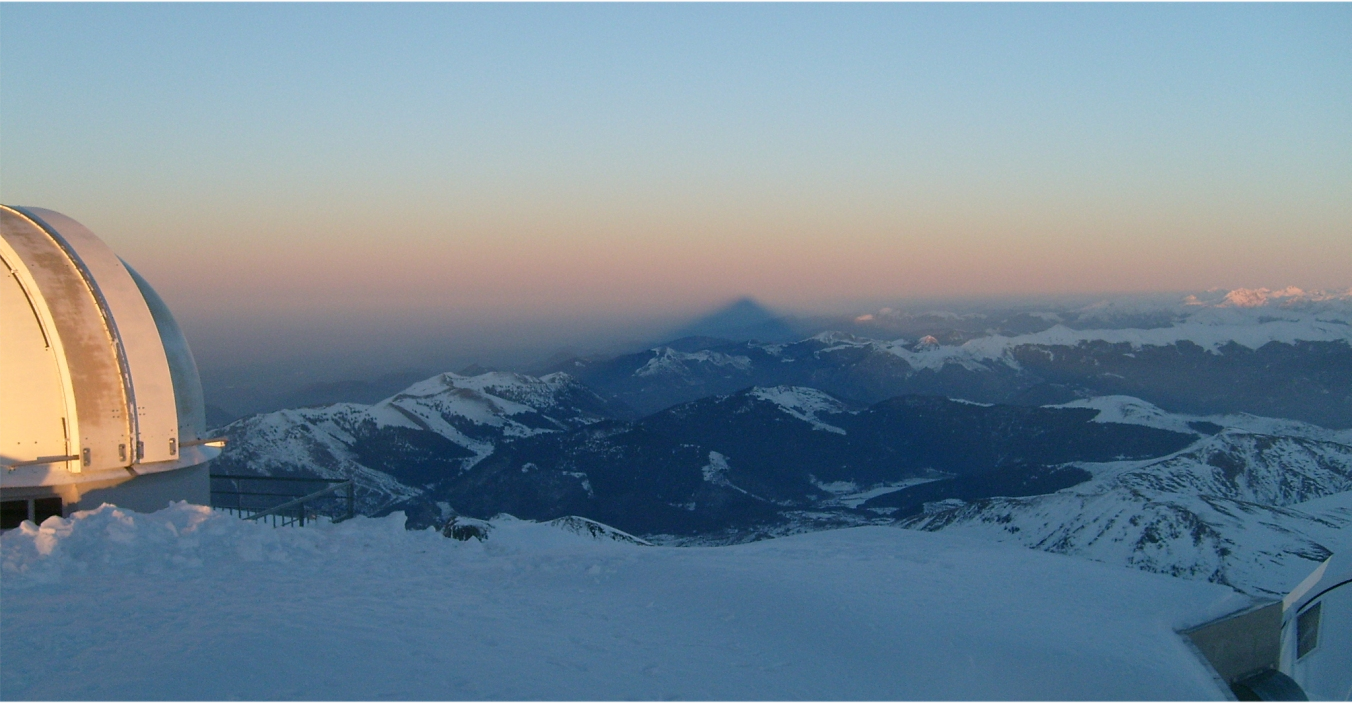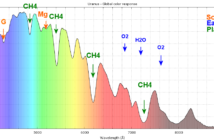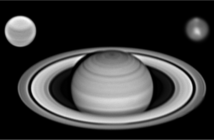On March 8/9th, I had the honor and pleasure to participate to a planetary mission at the 1-meter telescope of the Pic du Midi (T1M) lead by Marc Delcroix, President of the SAF planetary observations commission. Here is a summary!
The T1M of the Pic du Midi observatory is a professional telescope that has been historically installed in 1963 to make high-resolution photographies of the Moon, in order to prepare the APOLLO landings. The NASA itself founded the primary mirror. This is a cassegrain with a Nasmyth design: the focused light is reflected with a third plan mirror found between the primary and the secondary, toward the left side of the tube. It can be seen here at left with the instrumentation in the declination axis. Focal length at prime focus is 17 meters (F/D 17).
All along its history, the instrument produced superb planetary images. I remember above all the first Mars CCD images in 1988 and 1990, the monitoring of Jupiter for the Galileo mission, the discovery of the BC/DE fusion on Jupiter in 1998 June…
Some CCD images taken during the last decenniume on the Planétarium de Saint-Etienne website.
François Colas, astronomer at the IMCCE (Institut de mécanique céleste et de calcul des éphémérides), have been inviting some amateur observers since two years to keep on using this superb instrumentation, to study some particular phenomena, with in mind the recent renewal of planetary studies from the ground including by amateurs. Marc and I are of course most interesting in the monitoring of the giant planets. In 2012 and 2013, the team has already obtained some breath-taking des methane images of Jupiter, and images of Saturn, Uranus and Neptune that can be considered as references.
Unfortunately we did not met good conditions, but we have been able to carry out some work. Each time Jupiter was the first target of the night. High-resolution was not possible but watching for possible fireballs thanks to the DeTeCT software created by Marc.
Still we did obtain some nice CH4 images. Below is Jupiter with two of its red spots (NNTZ at the upper side, and “ROZ” (formerly WSZ), at the lower left of the NNTZ LRS, very bright in that band, and Saturn.
The planet Mars was well placed to be observed in the middle of the night. My project was to show the evolution of Martian clouds over several hours with a blue filter, but again conditions were not up to the task. The set still reveals the aphelion cloud belt, Tharsis clouds shining bright seen by the edge, and other things.
Finally, no one climb the Pic only for Astronomy. The beauty of the site is superb, above all when one discovers it for the first time as it has been for me. Below is a very classical spectacle but that it’s impossible to grow tired with: the shadow of the Pic at sunset!

